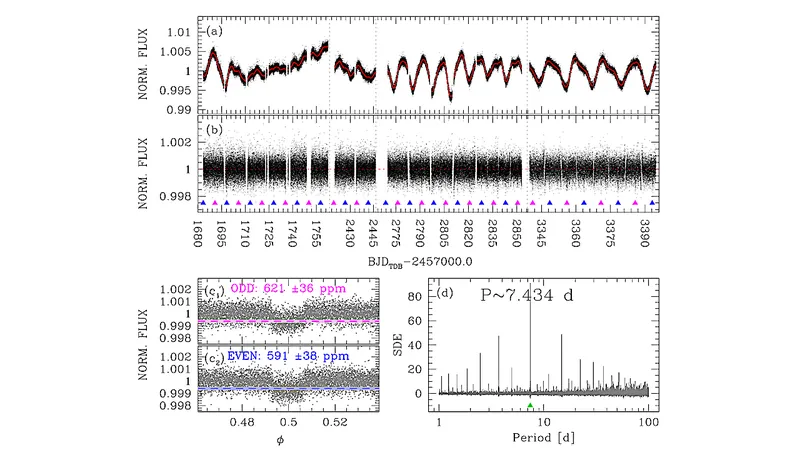
TOI-1430 b: A Young Exoplanet with a Mysteriously Evaporating Atmosphere!
2024-11-21
Author: Sarah
In the hunt for extraterrestrial worlds, small-sized exoplanets in close orbits around young stars—ranging from 10 million to 1 billion years old—offer an exciting glimpse into planetary formation and atmospheric evolution. One such intriguing discovery is TOI-1430 b, a young exoplanet characterized by an atmosphere that is notably escaping into space.
Thanks to the intensive all-sky survey led by TESS (Transiting Exoplanet Survey Satellite), scientists have uncovered numerous exoplanets, including TOI-1430 b, which orbits the K-dwarf star HD 235088. This particular exoplanet is approximately 700 million years old and has been a focal point of study for research teams—including GAPS, TKS, and CPS—dedicated to measuring its mass and radius with remarkable precision.
In a groundbreaking collaboration, researchers have successfully modeled the signals emitted by the highly active host star as well as those of the transiting exoplanet, using both photometric and spectroscopic data. This meticulous approach has enabled them to determine the planet's density and reconstruct the intricate history of its atmosphere.
TOI-1430 b orbits its host star every 7.43 days and has been found to be a low-density mini-Neptune, with a radius of about 1.98 times that of Earth and a mass approximately 4.2 times greater. With a density of 0.5 times that of Earth, it falls at the boundary of the renowned "radius gap" where many exoplanets are found lacking sufficient atmosphere to avoid loss to stellar radiation.
What makes TOI-1430 b particularly fascinating is its escaping helium atmosphere. Research indicates that shortly after its formation, this exoplanet could have had a dramatically larger atmosphere, potentially expanding its radius to 5 to 13 times its current size, along with a mass that was 1.5 to 2 times heavier. However, in the next 200 million years, its envelope is predicted to shed significantly, revealing a core that may resemble Earth’s in size.
This intriguing atmospheric loss raises questions about the future of TOI-1430 b and what lies beneath its now-thinning gaseous cover. With ongoing monitoring and studies, astronomers are keen to uncover the fate of these young planets, including how many like TOI-1430 b will one day evolve into rockier, Earth-like worlds.
Keep your eyes on the stars as scientists continue to unveil the mysteries of our universe—one exoplanet at a time!

 Brasil (PT)
Brasil (PT)
 Canada (EN)
Canada (EN)
 Chile (ES)
Chile (ES)
 España (ES)
España (ES)
 France (FR)
France (FR)
 Hong Kong (EN)
Hong Kong (EN)
 Italia (IT)
Italia (IT)
 日本 (JA)
日本 (JA)
 Magyarország (HU)
Magyarország (HU)
 Norge (NO)
Norge (NO)
 Polska (PL)
Polska (PL)
 Schweiz (DE)
Schweiz (DE)
 Singapore (EN)
Singapore (EN)
 Sverige (SV)
Sverige (SV)
 Suomi (FI)
Suomi (FI)
 Türkiye (TR)
Türkiye (TR)